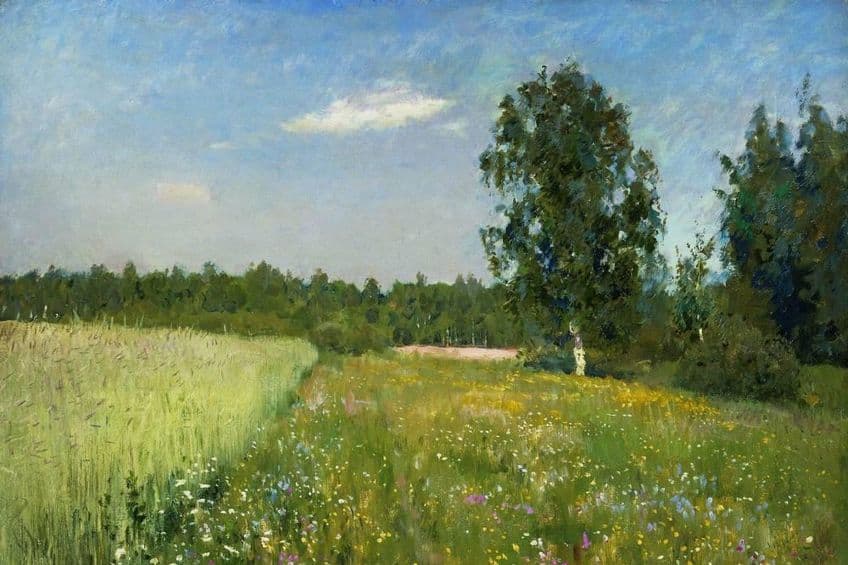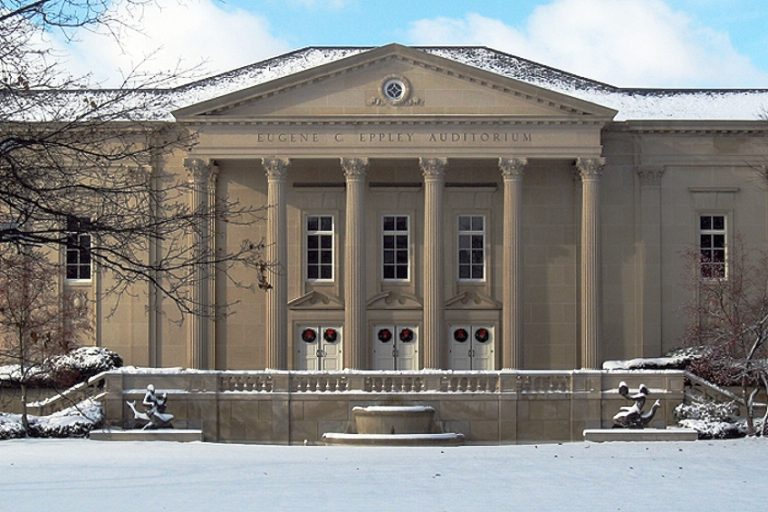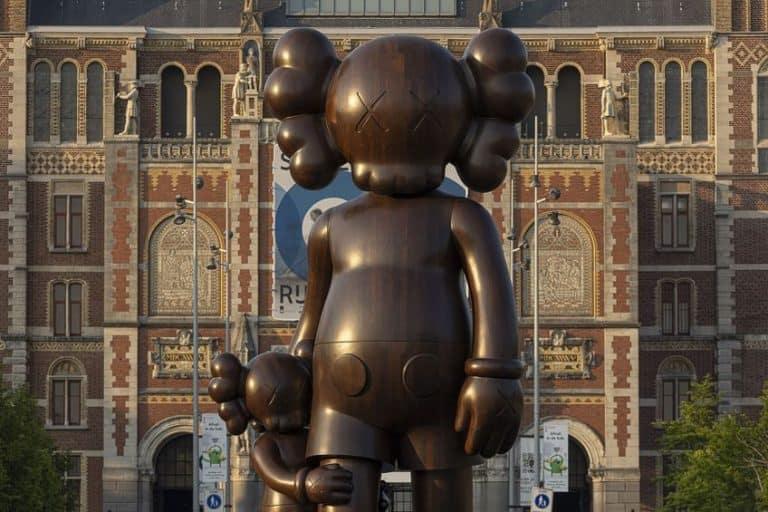Isaac Levitan – A Master of Atmospheric Russian Landscapes
Isaac Levitan was a Russian painter renowned for his masterful landscapes that captured the soul of the Russian countryside. A leading figure in the Peredvizhniki movement, Levitan’s work is characterized by its evocative use of light, mood, and atmosphere, reflecting both the beauty and melancholy of nature. His paintings, such as Above Eternal Peace and Golden Autumn, demonstrate a profound connection to the natural world and an exceptional ability to convey emotion through the landscape. Levitan’s influence extends beyond his lifetime, with his art continuing to inspire and resonate deeply with viewers, cementing his legacy as one of Russia’s greatest landscape painters.
Key Takeaways
- Isaac Levitan was a significant Russian landscape painter known for his “mood landscape” style.
- He overcame financial hardships and developed his art at the Moscow School of Painting.
- Levitan’s work had a lasting cultural impact and maintained close ties with other Russian cultural icons.
Early Life and Education
| Birth | August 30, 1860 |
|---|---|
| Death | August 4, 1900 |
| Place of Birth | Kibarty, Augustów Governorate, Russian Empire (now Lithuania) |
| Genre of Work | Landscape painting |
Isaac Levitan, a renowned Russian landscape painter, is celebrated for his profound ability to capture the intricate beauty of the natural world. Born in 1860 in the town of Kybartai, then part of the Russian Empire, Levitan’s early life was marked by financial struggles and a passionate commitment to art. His family’s relocation to Moscow allowed him to enroll at the Moscow School of Painting, Sculpture and Architecture, where he honed his skills and found his artistic voice.

Throughout his career, Levitan was profoundly influenced by the Realist and Naturalist movements, yet he developed a unique style often referred to as “mood landscape”. This approach not only depicted the physical beauty of the Russian wilderness but also captured its emotional and atmospheric essence. His masterpieces, like Above Eternal Peace and The Vladimirka Road, are prime examples of how he conveyed the blend of nature’s vastness and a deep sense of melancholy.
Levitan’s impact extended beyond his paintings; he fostered close relationships with other Russian cultural icons, such as Anton Chekhov, who admired and supported his work. Until his death in 1900, Levitan’s art continued to inspire not only his contemporaries but also future generations, solidifying his legacy as a pivotal figure in Russian landscape painting.
Childhood in Lithuania and Russia
Isaac Levitan was born on August 18, 1860, in Kibarty, a small town in Lithuania, which was then part of the Russian Empire. His family was Jewish, with his father, Elyashiv Levitan, being a self-educated man who worked as a translator. In the early 1870s, seeking better opportunities, the Levitan family, including Isaac and his siblings Adolf, Teresa, and Emma, moved to Moscow.
This move was pivotal, as it placed Isaac in proximity to some of the best artistic resources and communities in Russia.
Early Training
In Moscow, Isaac’s early education was largely conducted at home, influenced by his family’s emphasis on learning and culture. Despite the family’s financial hardships, they supported his budding interest in art. Isaac’s talent was apparent from a young age. This led to his enrollment in the Moscow School of Painting, Sculpture and Architecture, where his formal training began. The Levitan family’s difficult economic situation did little to deter Isaac from pursuing his passion for art.

Artistic Training at the Moscow School
At the Moscow School of Painting, Isaac Levitan was taught by prominent artists like Aleksei Savrasov and Vasily Perov. Savrasov, known for his lyrical landscapes, had a profound impact on Levitan’s development as an artist. Levitan excelled in his studies, gaining recognition early on for his exceptional skill. During his time at the school, Levitan received a scholarship, which provided much-needed financial relief and allowed him to continue his studies without interruption.
His relationship with Savrasov was one of mentor and student, deeply influencing his approach to landscape painting.
Mature Period
Isaac Levitan’s mature period was characterized by a refinement of his technique and vision. After completing his formal education, he continued to develop his unique style, often focusing on the Russian wilderness. His works from this period captured the serene and melancholic beauty of the landscape, contributing to what became known as the “mood landscape.” He became associated with the Peredvizhniki, a group of Russian realist artists who sought to break away from the academic style and engage more directly with contemporary life and social issues. Levitan’s work during this period solidified his reputation as one of Russia’s leading landscape painters.

Late Period
In the last years of his life, Levitan continued to produce significant works, even as he battled illness. His later paintings often reflected a deeper, more introspective engagement with nature. He seamlessly combined delicate details with broader, atmospheric elements, resulting in some of his most profound works. Despite his declining health, Levitan’s creativity and output remained strong until his death on August 4, 1900. His legacy as a master landscape painter endures, influencing generations of artists within Russia and beyond.
Levitan’s contributions to Russian art history, especially his advancements in landscape painting, have secured his place as a key figure in the annals of art.
Career and Artistic Development
Isaac Levitan’s career was shaped significantly by his connections with notable artists and movements. His work in Russian landscape painting and his involvement with the Peredvizhniki Movement became cornerstones of his artistic identity.

Influence and Collaborations
Levitan’s artistic journey was deeply influenced by his interactions with other prominent painters. He formed close ties with Vasily Polenov and Konstantin Korovin, who helped refine his technique and vision. These collaborations pushed him towards Realism and later Impressionism, blending natural light and emotional depth in his landscapes. He was also supported by Savva Mamontov, an art patron who provided him with opportunities to work in various artistic colonies. Mikhail Nesterov, another contemporary, often shared ideas with Levitan, contributing to his growth.
Pavel Tretyakov, the founder of the Tretyakov Gallery, collected Levitan’s works, ensuring his art reached a broader audience.
Affiliation With the Peredvizhniki Movement
Levitan’s affiliation with the Peredvizhniki (Wanderers) was a crucial part of his career. This group of artists rejected the academic restrictions of the time, promoting Realism and portraying the lives and landscapes of Russia authentically. Levitan’s works, depicting Russian landscapes, aligned perfectly with the Peredvizhniki’s principles. He participated in their traveling exhibitions, which aimed to make art accessible to the public across Russia. This exposure helped Levitan gain widespread recognition. The Moscow Society of Art Lovers also played a role in his development, as they promoted his works and fostered connections within the art community.

Notable Artworks by Isaac Levitan
Isaac Levitan created many influential landscape paintings that captured the beauty and mood of the Russian wilderness. His works are celebrated for their realistic and emotional portrayal of nature. Levitan’s painting, Above Eternal Peace (1894), is one of his most famous pieces. It depicts a tranquil lake with a church on the shore, symbolizing contemplating serenity and nature’s grandeur. His artwork, The Vladimirka Road (1892), reflects the stark reality of a desolate road with deep emotional impact. Levitan’s March (1895) captures the essence of early spring with melting snow and budding trees, showcasing his skill in depicting seasonal changes.
Levitan actively participated in exhibitions, displaying his works in events organized by the Peredvizhniki (The Wanderers), a group of Russian realist artists, which allowed his art to reach a wider audience.
Cultural Impact and Relationships
Isaac Levitan’s life was deeply enriched by his relationships and cultural surroundings. Interactions with prominent figures and personal influences shaped his artistic journey.

Friendships With Notable Individuals
Isaac Levitan formed close friendships with influential people of his time. Among them were Anton Chekhov and his brother Nikolai Chekhov. These friendships were invaluable, offering both creative inspiration and personal support. Levitan and Anton Chekhov shared a deep understanding of human nature, which is seen in both Levitan’s landscapes and Chekhov’s writing. The Chekhov family, including Maria Pavlovna Chekhova, held Levitan in high regard, often inviting him into their home. Sofia Kuvshinnikova, a fellow painter, was another significant figure in Levitan’s life. They traveled together, and her passion for art provided Levitan with new perspectives.
Their relationship, both personal and professional, influenced many of his works.
Personal Life and Influences
Levitan’s cultural background greatly impacted his art. His Jewish heritage occasionally led to challenges in his career, but it also enriched his perspective, allowing him to depict the Russian landscape with unique emotional depth. His time at the Russian Museum and other cultural institutions exposed him to various styles and techniques, enhancing his own skills. The support from friends like the Chekhovs bolstered his confidence in his work. Levitan’s personal struggles, reflected in his later works, showcased his resilience and ability to transform personal pain into art. His relationships, both supportive and challenging, played a critical role in molding his artistic legacy.

Legacy and Memorials
Isaac Levitan remains a towering figure in Russian art, celebrated for his landscapes that capture the beauty and essence of the Russian wilderness. His works are prominently displayed in major museums, continue to inspire modern artists, and hold a significant place in today’s art world. Levitan’s notable paintings Birch Grove, Golden Autumn, Eternal Rest, and View of Simonov Monastery are housed in famous museums. The Tretyakov Gallery in Moscow holds one of the largest collections of his works. The Russian Museum also features many of Levitan’s masterpieces.
These collections provide invaluable glimpses into Levitan’s techniques and his deep connection to nature.
Inspiration for Modern Artists
Modern artists often draw inspiration from Levitan’s portrayal of the Russian landscape. His works have influenced the techniques and aesthetics of contemporary landscape painters. Levitan’s ability to convey mood and atmosphere through nature continues to be studied and admired. His paintings are used as benchmarks for aspiring artists aiming to capture the delicate balance between realism and emotion.

Legacy of Isaac Levitan Today
Today, Levitan’s legacy is evident in both academic and popular circles. His paintings are frequently featured in exhibitions around the world, highlighting his lasting impact on art. The Kremlin and other cultural institutions in Russia often celebrate his contributions through special events. Levitan’s art remains a testament to his talent and his profound ability to evoke the Russian spirit.
Isaac Levitan’s legacy as one of Russia’s preeminent landscape painters endures through his ability to capture the essence of the natural world with unparalleled emotional depth. His works, marked by a profound sensitivity to light, color, and mood, reflect a deep spiritual connection to the landscapes he depicted. Levitan’s contribution to Russian art is not only measured by the beauty and technical prowess of his paintings but also by his influence on future generations of artists who sought to portray the poetic and emotional qualities of nature. As we continue to admire his masterpieces, Levitan’s vision of the Russian landscape remains a timeless testament to the power of art to evoke the sublime.
Frequently Asked Questions
What Is Isaac Levitan Known for in the Art World?
Isaac Levitan is renowned for his landscape paintings. He captured the beauty of the Russian wilderness. His works often conveyed deep emotional experiences and moods.
Which Specific Techniques Did Isaac Levitan Employ in His Paintings?
Levitan used a combination of Realism and Naturalism. He often focused on light and shadow. His brushwork created texture and depth. These techniques allowed him to depict landscapes vividly.
What Are Some of the Most Famous Works Created by Isaac Levitan?
Some of Levitan’s well-known paintings include Above Eternal Peace and The Vladimirka Road. These works showcase his ability to evoke emotion. The Lake is another notable piece that highlights his skill.
How Has Isaac Levitan Influenced Landscape Painting?
Levitan influenced landscape painting by emphasizing mood and atmosphere. He inspired future artists to explore the emotional side of nature. His unique approach set a new standard in Russian landscape art.
Isabella studied at the University of Cape Town in South Africa and graduated with a Bachelor of Arts majoring in English Literature & Language and Psychology. Throughout her undergraduate years, she took Art History as an additional subject and absolutely loved it. Building on from her art history knowledge that began in high school, art has always been a particular area of fascination for her. From learning about artworks previously unknown to her, or sharpening her existing understanding of specific works, the ability to continue learning within this interesting sphere excites her greatly.
Her focal points of interest in art history encompass profiling specific artists and art movements, as it is these areas where she is able to really dig deep into the rich narrative of the art world. Additionally, she particularly enjoys exploring the different artistic styles of the 20th century, as well as the important impact that female artists have had on the development of art history.
Learn more about Isabella Meyer and the Art in Context Team.
Cite this Article
Isabella, Meyer, “Isaac Levitan – A Master of Atmospheric Russian Landscapes.” Art in Context. July 10, 2024. URL: https://artincontext.org/isaac-levitan/
Meyer, I. (2024, 10 July). Isaac Levitan – A Master of Atmospheric Russian Landscapes. Art in Context. https://artincontext.org/isaac-levitan/
Meyer, Isabella. “Isaac Levitan – A Master of Atmospheric Russian Landscapes.” Art in Context, July 10, 2024. https://artincontext.org/isaac-levitan/.











